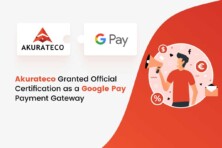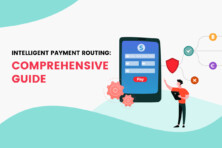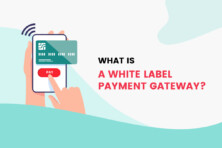
Vladimir Kuiantsev
CEO of Akurateco
If you own a business of any size or sell payment processing to other merchants, at a certain point you face the need to choose the right payment solution to facilitate and consolidate your transaction flow. Should you go with a white-label payment software, Cashier, or develop your own payment gateway? There is no one universal answer to this question.
But in this article, we’ll try to explain what benefits each of these solutions offer and how you can save up to 50% on processing costs by choosing the right technology.

How to spend 50% less on payment processing with white-label payment software. Source: pexels.com
Cashier vs. a white-label payment gateway: What to choose?
Cashier
As a rule of thumb, Cashier technology best fits the needs of merchants. Cashier technology serves as a buffering facilitating the transaction flow between merchants and multiple payment providers.
In other words, it helps merchants supporting several payment methods keep all the payment data inside a single platform and significantly decrease the workload of their employees.
On average, team members spend at least 30-40% of their time on payment-related communication. Tracking down transactions on multiple payment platforms, sending out reminders, running transaction verification and reconciliation – that’s just a tip of an iceberg. All these tasks rob the employees of an opportunity to focus on their key responsibilities. As a result, the company loses precious time and money.
In the meantime, Cashier costs half of what hiring a team of payment experts would cost. And though, it doesn’t fully constitute a team of professionals, it does save their time and, as a result, the company’s money. In other words, one person with Cashier will do things much faster and more effectively than a whole team without this technology.
White-label payment gateway
A white-label payment gateway, in its turn, best meets the needs of PSPs or ISOs selling payment processing. On average, these companies support multiple payment channels and rarely if ever have a user-friendly admin panel or back office.
As a solution, ISOs choose one of these options. First, they might use third-party processing software. Unfortunately, this is often accompanied with frequent system downtimes. Moreover, having an external provider isn’t always safe, especially in high-risk industries with their unstable pay-in/outs tendencies.
Second, ISOs can build their own payment gateway. This requires substantial investments in both development and hiring a team of experts. A number of companies that can afford it during the initial stages of their business is next to zero.
Finally, they can use a white-label payment gateway to facilitate their payment processing. It costs less and offers a variety of payment methods, an extensive list of useful features, and high-end security measures. On top of that, maintenance and ongoing upgrades of the system are 100% on a white-label payment software provider. All in all, this solution will cost you less while offering more.
To better demonstrate what sort of savings we’re talking about here, let’s crunch some numbers.
You might also like: Smart Invoicing technology explained
The cost of a payment gateway
How much does it cost to build your own payment gateway?
To build your own payment gateway, you need to hire a team of seasoned developers with expertise and hands-on experience in the payment industry. The monthly salary of a single developer starts at 3.500 USD. Multiply that by 4 to 5 people required for the job – and you’ve got an average of 17.500 USD a month during the development stage. The development will take between 6 and 24 months depending on the functionality requirements. Thus, the most basic payment gateway will cost you 105.000 USD. But, knowing that “basic” is never enough for a growing business, you better keep your wallet wide open for unexpected expenses.
However, the expenses don’t stop with a finalized payment gateway. Once it is done, developers switch from developing to maintaining the system. That includes bug fixing, security enhancements, integration of new payment methods, etc. The list goes on.
Apart from that, at this point you will need to hire a team of payment professionals to manage your payment flow inside the system you developed. More often than not, it is not a one-person job. Thus, you will need two to three people (or more depending on your sales volume) on staff to organize and keep track of transactions. Monthly salary of such a professional varies between 3.500 USD. Multiply that by three – and you’ve got an average of 10.500 a month. Add an approximately the same amount for a team of developers – and you easily get 21.000 USD in monthly salary expenses.
How much for a white-label payment gateway?
The cost of a white-label payment gateway consists of a setup fee, a monthly fee, and a fee charged per connector. The setup fee is only charged once, during the onboarding.
Thus, Akurateco, an Amsterdam-based white-label payment gateway, charges 5.000 EUR for the setup. The price on the market varies depending on the needs of your business. But frankly, this is a rather affordable price range. Meanwhile, a setup fee for Cashier is as low as 2.500 EUR.
A monthly fee for both a white-label payment gateway and Cashier with Akurateco is 1.500 EUR while a fee per connector is 50 EUR/month.
Now, let’s take a moment to compare these prices (1.550 EUR) to the ones required for your own payment gateway that easily run up to 12.000 USD/month. And we’ve got a winner!
50 shades of white-label payment software
The benefits of a white-label payment gateway doesn’t end with significant savings. Among its other benefits are:
1. Enhanced security.
Complying with top-of-the-industry security standards requires both in-depth expertise and money. With a ready-made white-label system, you get all the expertise at a reasonable price.
2. Simplified data management.
How would you like to get all of your payment methods consolidated in a single easy-to-use platform? This is what a white-label payment system is all about.
3. Flexible fee structure.
You can easily choose what to charge each client for and set up rules to determine specific payment triggers.
4. Improved transaction approval ratio.
Thanks to smart routing and cascading, you can decrease the number of declines and grow your transaction approval ratio from day one.
5. Diversified list of payment methods.
A white-label system is likely to have an extensive list of payment methods to meet the needs of its clients. Thus, Akurateco covers 100+ payment methods and can integrate a new one within 10-20 days.
Over to you
As you see, the choice of a payment processing solution depends on your budget and needs of your business. However, a white-label payment platform has proven to be cost-effective for businesses across multiple industries. To get a closer look at a white-label payment software, you can also attend one of our free Demo sessions. We’ll be happy to answer your questions and shed light on the solution in question!
Vladimir Kuiantsev is the CEO of Akurateco, a cutting-edge SaaS platform with 70+ connectors catering to international businesses. With 10+ years of experience in the payment industry, he’s successfully founded and grown two major payment startups before becoming an executive at Akurateco.
SEE ALSO:









